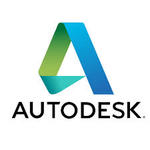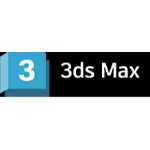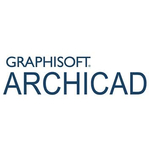TechnologyCounter provides genuine, unbiased real user reviews to help buyers make informed decisions. We may earn a referral fee when you purchase through our links, at no extra cost to you.
List of 15 Best Architectural Rendering Software
Showing 1 - 15 of 20 productsBlender is a 3D animation software. Developed by a community of passionate artists and programmers, Blender offers a wide range of features and tools for creating stunning visual effects, 3D models, and animations. With its user-friendly interface an...Read Blender Reviews
Unity Reflect is a software that allows architectural and construction teams to seamlessly translate their BIM (Building Information Modeling) designs into immersive and interactive 3D experiences. With its intuitive interface and real-time collabora...Read Unity Reflect Reviews
Revit is a and innovative software that revolutionizes building information modeling (BIM). It has simplified the designing, planning, and construction process of buildings, making it an essential tool for architects, engineers, and building professi...Read Revit Reviews
3ds Max is a and versatile 3D modeling and animation software that has been a leading tool in the entertainment, architecture, and product design industries for over 30 years. From creating stunning visual effects to designing intricate 3D structures...Read 3ds Max Reviews
Lumion is a 3D rendering software that allows architects, designers, and artists to bring their visions to life in stunning detail. With its user-friendly interface and powerful features, Lumion has quickly become the go-to tool for creating realisti...Read Lumion Reviews
V-Ray is a rendering software that has revolutionized the world of 3D rendering. Its intuitive interface features make it a top choice among architects, designers, and visual effects artists. With its lightning-fast speed and stunning visual quality,...Read V-Ray Reviews
Shapespark is a all-in-one 3D visualization software designed to bring your digital spaces to life. With an intuitive and user-friendly interface, Shapespark allows you to easily create immersive and interactive 3D environments, providing a unique an...Read Shapespark Reviews
Cedreo is an innovative architecture software that allows designers and contractors to easily create floor plans and 3D visualizations for their clients. With its user-friendly interface and powerful features, Cedreo streamlines the design process an...Read Cedreo Reviews
Modo 3D is a and versatile 3D modeling and animation software designed for artists and designers. With a user-friendly interface and robust tools, Modo 3D allows you to bring your creative visions to life with ease. Discover the endless possibilities...Read Modo 3D Reviews
Maxwell Render is a high-quality rendering software that provides realistic and accurate results for architectural visualization, product design, and visual effects. With its advanced features interface, Maxwell Render has become a popular choice for...Read Maxwell Render Reviews
MAXON Cinema 4D is a 3D modeling, animation, and rendering software used by creative professionals all over the world. With its intuitive interface, customizable tools, and dynamic workflows, it allows artists to bring their ideas to life with ease a...Read MAXON Cinema 4D Reviews
ArchiCAD is a leading software used by architects and designers for creating precise and detailed 3D models of buildings. With its user-friendly interface and wide range of tools, ArchiCAD allows users to efficiently design and visualize any architec...Read ArchiCAD Reviews
Artlantis, the innovative rendering software that brings your designs to life with stunning visual representations. With its user-friendly interface features, Artlantis is trusted by architects, designers, and artists to create realistic and immersiv...Read Artlantis Reviews
Autodesk Maya is a 3D animation and modeling software used by professionals in the film, television, and gaming industries. With its powerful tools functionality, Maya allows artists to bring their ideas to life in stunning detail and realism. Get re...Read Autodesk Maya Reviews
Unreal Engine is a powerful, industry-leading software that allows creators to bring their wildest imaginations to life. With its intuitive interface and versatile tools, Unreal Engine has become a go-to choice for game developers, filmmakers, archit...Read Unreal Engine Reviews
- What Is Architectural Rendering Software?
- Top Reasons Why Businesses Need Architectural Rendering Software?
- What Are the Top Key Features of Architectural Rendering Software?
- What Are the Top Benefits of Architectural Rendering Software?
- What Are the Steps to Choose the Right Architectural Rendering Software?
- What Are the Types of Architectural Rendering Software for Different Industries?
- What Are the Technology Trends for Best Architectural Rendering Software?
- What Are the Deployment Options for Architectural Rendering Software?
What Is Architectural Rendering Software?
Architectural rendering software refers to a computer application utilized by architects for the purpose of generating realistic visualizations of buildings or prospective designs.
Typically, this program has various functionalities, including the integration of three-dimensional models representing the architectural components, the simulation of realistic lighting and shadows derived from the environmental context, as well as the use of textures to generate highly detailed photographs.
The best architectural rendering software facilitates efficient and seamless modifications to the design, enabling users to swiftly and effortlessly implement changes. The primary objective of architectural rendering software is to facilitate enhanced visualization for architects, enabling them to effectively conceptualize and mimic the appearance of a proposed design once it is constructed. Moreover, the program assists architects in identifying prospective issues and devising prompt and precise resolutions.
Ultimately, the generated outcomes of these three-dimensional models can be effectively employed to visually depict project ideas to clientele. In summary, architectural rendering software serves as a highly valuable resource for architects seeking to visually conceptualize their creative endeavors.
The best architectural rendering software enables users to engage in the process of designing and constructing lifelike three-dimensional models, facilitating the examination of the design from multiple perspectives and the identification of any potential issues. This facilitates architects in developing efficacious designs that align with the requirements of their clients.
Top Reasons Why Businesses Need Architectural Rendering Software?
1. Architectural rendering software offers a broad array of tools that facilitate the creation of three-dimensional architectural models, enabling efficient and precise depiction of intricate designs.
2. Visual feedback enables end users and stakeholders to have a comprehensive knowledge of a design prior to its physical implementation.
3. The best architectural rendering software possesses the capability to generate realistic visuals by incorporating dynamic lighting, authentic shadows, and lifelike product materials. This enhanced visual representation enables stakeholders to make more informed assessments of a given design.
4. The utilization of top architectural rendering software can enhance the potential for collaboration among diverse designers through the provision of a virtual platform that enables the evaluation and alteration of a design.
5. The utilization of virtualization in design enables testers to replicate the circumstances and functionalities of a structure prior to its physical construction, resulting in significant time and cost savings during the building phase.
6. By means of manipulating 3D models, designers has the capability to engage in an extensive exploration of design possibilities, enabling them to rapidly assess and evaluate many variables.
7. Architectural rendering software possesses the capability to generate intricate elements that would otherwise be excessively intricate or expensive to replicate in a tangible model.
8. The feature enables swift and effortless adjustment of a design using a single button click, resulting in time savings during the revision process.
9. The best software to render architecture, equipped with realistic environmental lighting, enhances the design process by offering a wider range of visual elements, including various lighting conditions such as sunrises and sunsets. This feature facilitates the acceleration of the design process.
10. The accessibility of 3D models is enhanced for all stakeholders, as they can be readily imported into various software applications and effortlessly shared over geographical distances, accompanied by high-quality images.
11. The provision of an accurate depiction of the final outcome aids in furnishing stakeholders with a comprehensive understanding, hence enabling them to offer constructive feedback regarding potential modifications to the design.
12. The utilization of this technology obviates the necessity for labor-intensive manual tasks involved in the creation of tangible prototypes, resulting in significant time and cost savings within the manufacturing workflow.
13. The utilization of three-dimensional (3D) technology facilitates the construction of landscapes and complete urban areas, incorporating realistic lighting, textures, and shadows. This advancement expedites the decision-making process during the design phase.
14. The best architectural rendering software affords photographers and interior designers the opportunity to present their designs through photorealistic photos, thus enhancing the effectiveness of their marketing efforts.
The interactive characteristics of this tool facilitate the modification of pre-existing designs, eliminating the need for users to create new ideas from the ground up.
What Are the Top Key Features of Architectural Rendering Software?
1. 3D modeling: Architectural rendering software offers a wide range of three-dimensional capabilities that enable the creation of lifelike spaces and surroundings, closely resembling real-world situations.
2. Lighting simulation: The best architectural rendering software enables users to generate accurate lighting models for various applications, encompassing the visualization of natural light sources and the demonstration of artificial or improvised lighting solutions.
3. Texturizing and materials: Architectural rendering software for Mac facilitates the incorporation of texture and material onto three-dimensional models, hence enhancing their visual realism.
4. Animation: The best architectural rendering software facilitates the generation of dynamic animations that effectively demonstrate architectural projects by incorporating realistic features and movement.
5. Path-tracing: Top architectural rendering software incorporates path-tracing techniques to enable users to make precise predictions regarding the impact of both artificial and natural light sources within a three-dimensional model.
6. Output options: Architectural rendering software facilitates the generation of outputs of superior quality across several forms, encompassing interactive 3D renderings, real-time views, and panoramic photos.
7. Rendering techniques: Most realistic architectural rendering software provides users with the capability to employ several rendering techniques, including global illumination, ray-tracing, and photon mapping, in order to produce authentic renderings and simulations.
8. Scripting tools: Typically, the best architectural rendering software includes scripting tools that provide users the ability to automate repetitive operations and tailor the software to suit their individual requirements.
What Are the Top Benefits of Architectural Rendering Software?
1. Improved Client Communication: Architectural rendering software facilitates the expeditious and precise generation of superior 3D visual representations that faithfully depict design concepts. This enables architects to proficiently showcase their concepts to customers and other relevant parties, hence promoting enhanced communication and comprehension.
2. Increased Efficiency: The utilization of the best architectural rendering software has the potential to significantly decrease the duration required for generating three-dimensional images, hence enabling the allocation of more time and resources toward other facets of the design process.
3. Cost Savings: The optimization of the architectural rendering process enables users to achieve cost savings by eliminating the need to hire extra personnel or outsource rendering tasks.
4. Environment-Friendly: The obsolescence of physical depictions results in the elimination of the time, energy, and resources required for their production.
5. Improved Visualization: Top architectural rendering software offers comprehensive visual representations of the entirety of a project, encompassing both interior and external perspectives, as well as detailed depictions of furniture, landscape designs, and other elements. This enables stakeholders to enhance their decision-making process by accessing a higher level of information and insight.
6. Accurate Documentation: The utilization of rendering software facilitates the process of capturing and documenting the comprehensive design of a project, hence enhancing the ease of reference during the creation or modification phases.
7. Sharing and Collaboration: Architectural renderings generated through the utilization of top architectural rendering software provide seamless sharing among diverse team members, hence enabling effortless cooperation.
What Are the Steps to Choose the Right Architectural Rendering Software?
1. Identify your needs: Before acquiring any software, it is imperative to ascertain the precise requirements of your project. Please carefully evaluate the extent of your project and the specific type of visual representations that you need. This study aims to assess the caliber of the current renderings generated by the software and evaluate their compatibility with different file formats.
2. Consider cost and budget: To ascertain the cost of the software, it is recommended to conduct research by visiting the official website of the software provider or by initiating contact with them. It is advisable to take into account the expenses associated with upgrades or supplementary modules, alongside the long-term financial plan and a realistic assessment of return on investment (ROI).
3. Talk to professionals: It is advisable to establish communication with seasoned pros who have already implemented the program you are contemplating procuring. This endeavor has the potential to offer significant insights. Additionally, it is crucial to assess the vendor's customer service proficiency to guarantee satisfactory post-purchase assistance.
4. Consider ease of use: Evaluate the software's functionality by acquiring a complimentary trial or demonstration version. Assess the level of user-friendliness exhibited by the system and ascertain its compatibility with the requirements of your project. It is imperative to do thorough testing to ascertain the fulfillment of hardware requirements, compatibility with pre-existing systems, and other pertinent criteria.
5. Make sure the data is transferable: The investigation involves ascertaining the software's capability to facilitate data transfer to industry standard formats such as FBX, OBJ, and ALEMBIC, as well as its compatibility with prominent 3D programs.
6. Read reviews: Conduct a comprehensive analysis of online reviews and ratings to ascertain the software's reliability. Examine client feedback and peruse online forums and additional resources.
7. Make the decision: Once all the material has been assessed and a comprehensive understanding of the software's functionality has been acquired, the decision-making process may commence.
What Are the Types of Architectural Rendering Software for Different Industries?
There exists a diverse range of architectural rendering software that caters to the specific requirements of various sectors.
For Architecture: Software applications that are specifically developed for the purpose of generating highly realistic visual representations of architectural structures and interior designs commonly incorporate a range of functionalities, including 3D modeling tools, lighting, and texturing options, as well as additional capabilities like automated walkthroughs.
Prominent instances of best architectural rendering software utilized by architects encompass Autodesk Revit, which facilitates the creation of intricate architectural models, Autodesk 3ds Max, which enables the generation of photorealistic images, Lumion, which supports the production of realistic renderings incorporating interactive elements, and 3DVista, which facilitates the creation of lifelike walkthroughs of both interior and exterior spaces.
For Interior Designers: Interior designers often utilize software packages that offer robust drag and drop functionality, enabling them to efficiently generate interior designs accompanied by visually accurate photorealistic simulations.
Prominent instances of top architectural rendering software specifically tailored to cater to the requirements of interior design encompass Autodesk Revit, Autodesk 3ds Max, and 3DVista Visualize. Software packages meant to facilitate the creation of visual representations of engineering projects often incorporate various functionalities tailored specifically for engineers. These functionalities commonly include computer-aided design (CAD) tools and advanced three-dimensional (3D) visualization technology.
Prominent instances of rendering software utilized by engineers encompass Autodesk Inventor, Solidworks Premium, and Blender.
For Graphic Designers: Graphic designers frequently utilize software packages that offer a diverse range of features specifically designed for the creation of graphics and animations intended for online and motion graphics purposes. Prominent instances of software utilized by graphic designers encompass Adobe Photoshop, Adobe Illustrator, Adobe After Effects, and Cinema 4D.
What Are the Technology Trends for Best Architectural Rendering Software?
1. Rendering speed: TAn ideal rendering software should possess the capability to complete rendering tasks within a short span of time, typically minutes, as opposed to longer durations such as hours.
2. Photo-realistic visuals: Architectural rendering software ought to include the capability to generate hyper-realistic graphics in order to enhance accuracy and precision.
3. Web-based: In order to optimize accessibility, user-friendliness, and scalability, it is recommended that the program be designed as a web-based application.
4. Interoperability: The optimal rendering software should include the capability to seamlessly integrate with various software applications such as CAD, Sketchup, and 3D Modeling software.
5. Cloud-based: Cloud-based software has several benefits like rapid deployment, scalability, robust data protection, and cost-effectiveness.
6. Support for multiple rendering algorithms: The best architectural rendering software should include the capability to accommodate a diverse range of rendering algorithms, enabling the generation of renderings that are prompt, reliable, meticulous, and faithful representations of the intended output.
7. User-friendly UI/UX: The user interface should include an intuitive design and be accessible to professionals of varying skill levels.
8. Customization: The incorporation of a feature that allows for the customization of the output in accordance with the user's specific requirements and preferences is deemed necessary.
9. Support for VR: The prevalence of virtual reality is on the rise, necessitating the need for software that can effectively adapt to this emerging technology.
10. Affordability: The affordability of the software should be accessible to both enterprises and individuals.
What Are the Deployment Options for Architectural Rendering Software?
The available deployment choices for architectural rendering software are contingent upon the particular software package being utilized. Nonetheless, several prevalent deployment methods encompass the integration of the software into larger software suites, the utilization of standalone packages, the utilization of cloud-based services, and the utilization of mobile applications.
The incorporation of software suites on a broader scale facilitates a solutions-focused methodology, encompassing attributes such as concurrent collaboration with peers, immediate availability of models across many platforms, and adaptability to accommodate the requirements of sizable enterprises.
Standalone software packages sometimes provide specialized functionalities, including the ability to generate photo-realistic 3D images, apply bespoke texturing, and utilize advanced lighting tools. Cloud-based services offer a contemporary assortment of tools that possess the capacity for expansion to accommodate the needs of larger enterprises.
Additionally, these services enable users to engage in safe project collaboration on the cloud, eliminating the want for local installations. Mobile applications offer the benefit of enhanced mobility, enabling users to conveniently carry their projects with them regardless of their location.















